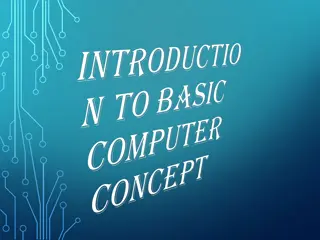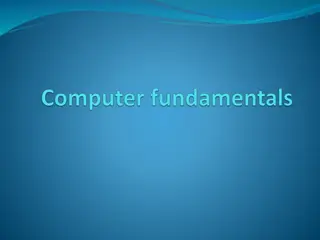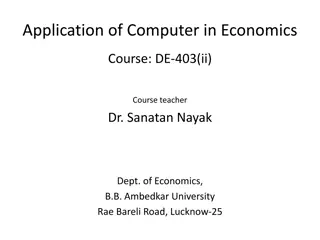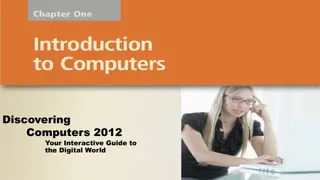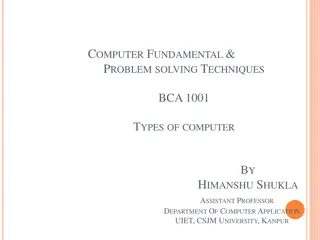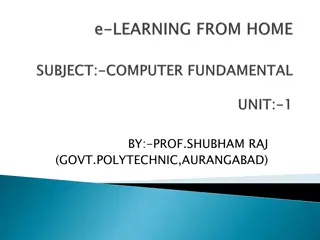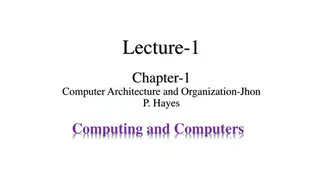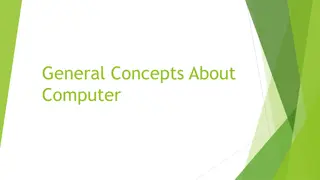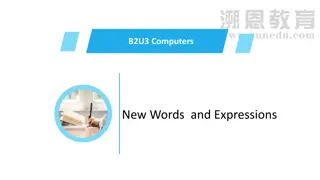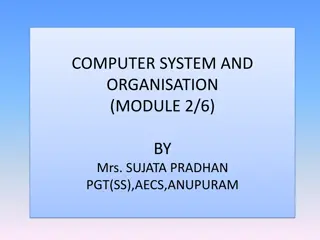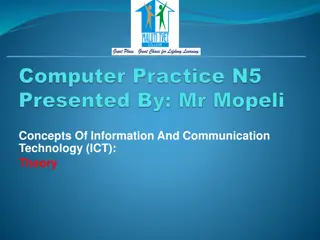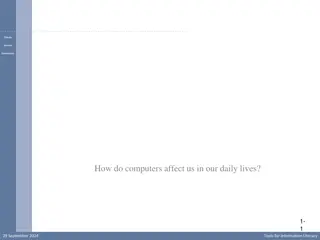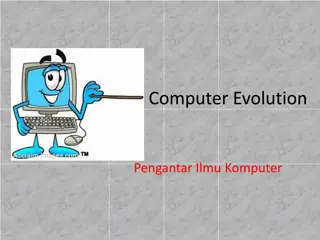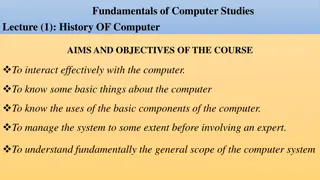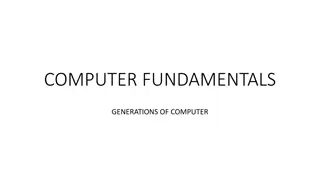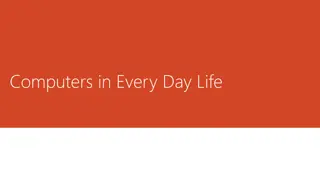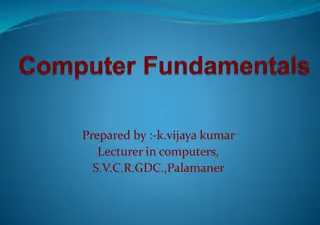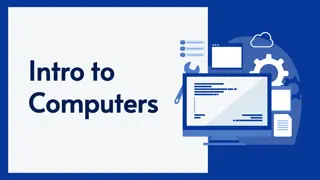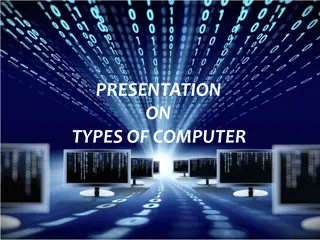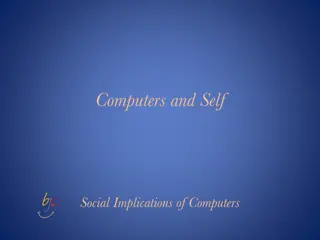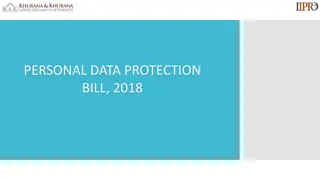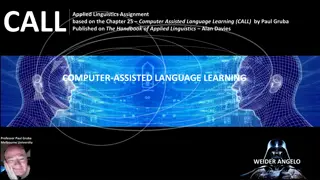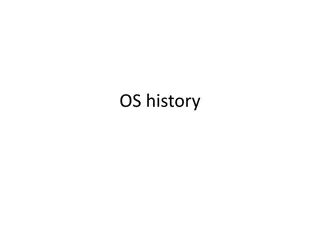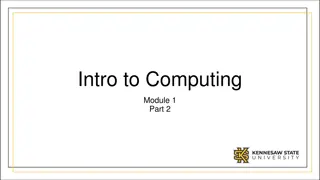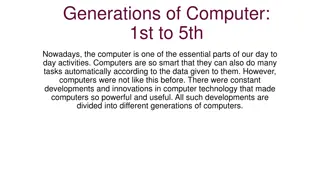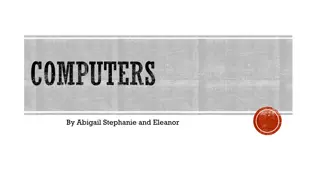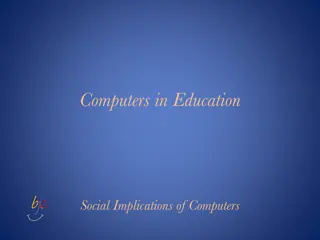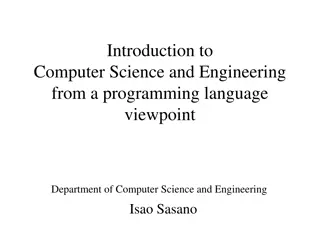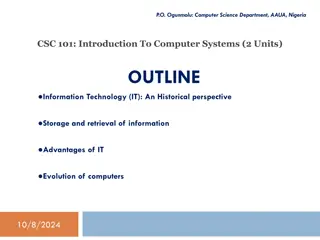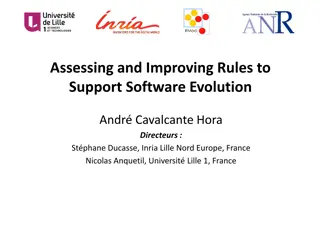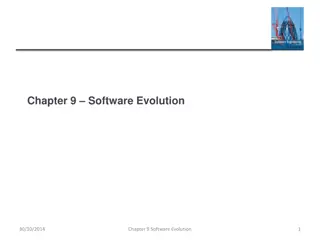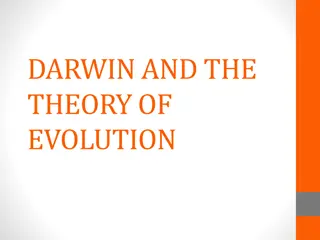Evolution of Computers: From Abacus to Personal Computers
Explore the fascinating journey of computers through history, from the invention of the Abacus in 4000 BC to the development of personal computers in the modern era. Learn about the four generations of digital computers, the impact of integrated circuits, shifts in programming languages, and societal changes driven by computer usage.
Download Presentation

Please find below an Image/Link to download the presentation.
The content on the website is provided AS IS for your information and personal use only. It may not be sold, licensed, or shared on other websites without obtaining consent from the author. Download presentation by click this link. If you encounter any issues during the download, it is possible that the publisher has removed the file from their server.
E N D
Presentation Transcript
CMIT100 CHAPTER 7 HISTORY OF COMPUTERS
Learning Objectives Compare computer hardware between the four computer generations. Describe the impact that integrated circuits and miniaturization have played on the evolution of computer hardware. Describe shifts in programming from low level languages to high level languages including concepts of structured programming and object-oriented programming. Explain how the role of the operating system arose and examine advances in software. Discuss the changes in society since the 1950s with respect to computer usage and computer users
Why are we talking about this? Because you can t figure out where you re going if you don t where you are
Early Computers Abacus ~4000 BC
Early Computers Jacquard s Programmable Loom 1801
Early Computers Charles Babbage s Difference Engine 1820s
Early Computers Enigma Machine 1940s
Digital Computers - Four Generations First Generation 1940s through 1950s Second Generation 1950s through 1965 Third Generation 1965 through 1970s Fourth Generation 1970s to Present
First Generation Vacuum Tubes ENIAC
Second Generation Transistors IBM 7094 Standardized Models
Third Generation Integrated Circuits (ICs) Minicomputers
Fourth Generation Microprocessors Personal Computers
Moores Law Gordon Moore 1965 Computing power doubles every 18 months
Evolution of Software Low-level languages High-level languages
Creative Commons Statement This work by Southern Maine Community College is licensed under a Creative Commons Attribution 4.0 International License. DOL Statement This workforce product was funded by a grant awarded by the U.S. Department of Labor s Employment and Training Administration. The product was created by the grantee and does not necessarily reflect the official position of the U.S. Department of Labor. The Department of Labor makes no guarantees, warranties, or assurances of any kind, express or implied, with respect to such information, including any information on linked sites and including, but not limited to, accuracy of the information or its completeness, timeliness, usefulness, adequacy, continued availability, or ownership.


